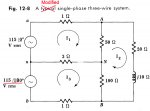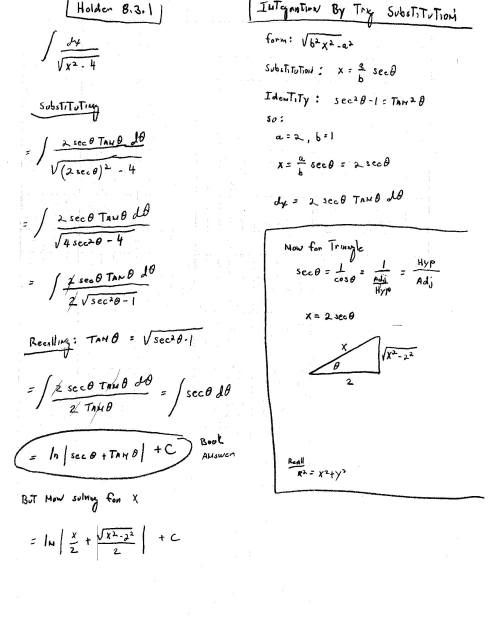mivey
Senior Member
I'm going to put myself on time out. I'm tired and getting grumpy.I apologize for that. It sounds snippish and mean.
I'm going to put myself on time out. I'm tired and getting grumpy.I apologize for that. It sounds snippish and mean.
It is a simple fact that a two wire source has only one voltage but the three wire source has two voltages (three if we include the larger voltage). They are simply not the same. Anyone who has lost a neutral can tell you that.
And how do you suppose that losing a neutral is the same circuit that you had before? We have gone from a source with two smaller single-phase voltages and one larger single-phase voltage to a source with just one single-phasevoltage. Hardly the same at all.
Then you might want to start with Faraday's Law of Induction and Lenz's Law. They are the basis for how transformers function, and are the root to the simplified equations that we use day to day.Do you really understand flux or are you just throwing that out there because it "sounds" good? How do you propose that it is going to dictate the voltage direction? I'm open to studying any theory you might be proposing but I suspect you are mis-interpreting some of the known theory. Feel free to post the theory that shows the voltage directions must be the same as I do not recall the one you might be referencing.
The fact is, the flux does not determine the voltage direction because the choice of a voltage reference is just that: a choice.

Not disputed. See post #333.Then you might want to start with Faraday's Law of Induction and Lenz's Law. They are the basis for how transformers function, and are the root to the simplified equations that we use day to day.
I didn't do this much math when I built my time machine, but that was tomorrow so maybe I did.
And a skilled F1 driver....100 million lines of magnetic flux equals one Webber
One Webber equals one fine hotdog
Nope.This is what Mivey and Besoeker are doing when they claim that there is an absolute 180? phase difference between the two voltage sources,
check out this one
http://www.weber.com/explore/grills/genesis-series
Gas grills don't do it for me. We do barbecue quite a bit, but use charcoal. Home made burgers at the weekend were well received.
If you want to use gas, you might just as well cook in the kitchen - we have a gas stove for that.

:lol::lol:
I didn't do this much math when I built my time machine, but that was tomorrow so maybe I did.

I think you're the only one that got that.:happyyes:
No? Really? Are you sure? You're not redefining the voltage source like I showed above?Nope.This is what Mivey and Besoeker are doing when they claim that there is an absolute 180? phase difference between the two voltage sources, instead of simply that they have changed the polarity on their reference points.
The simple fact (yes, fact) is that, for the single phase centre-tapped transformer, Van and Vbn are mutually displaced by 180deg.
For the sake of discussion, let's add labels to your nodes. Call the lower node "B", the middle node "N", and the upper node "A". You have labeled the voltages of your nodes: A=120v, N=0V, B=120VNot really.
Here's a simple diagram to illustrate the point I made about neutral current in post #49. It's one I've posted previously.

Unless the 120V supplies were in anti-phase i.e. 180deg apart, the neutral current would not, and could not, be not be zero.
The energy is typically dispersed in the form of radiated heat.Since energy can neither be created or destroyed, it was definitely converted to some other form of energy.
Nope, inertia again. Only mother-in-laws have that much mass.Who knows? The Earth might have started spinning just a tad faster.
For this situation you've defined that there is no reference frame. Nor does gravity require one since it uses an absolute (always positive) value for separation. Therefore the question as to direction is based on false presumptions. There is no direction.If two balls of equal mass were positioned in deep, empty outer space within appreciable ranges of their space distortion, the gravitational forces will pull them together. Now who is to say which one moved in which direction? You have to define a reference frame and there is no "right" or "wrong" reference frame.
From my equation, Vab=Van-Vbn
240<0= 120<0 - 120<180... There you go, no double negative anywhere to be seen.
Of course you could force a double negative into the discussion of two 120V sources viewed from the perspective of having the same phase angle: Van=120<0 and Vnb=120<0.
Vba+Van+Vnb=0 :: Vba + 120<0 + 120<0 = 0
120<0 + 120<0 = -Vba :: 120<0 + 120<0 = -(-240<0) :: Vba=-240<0
John, ya gotta be more care careful when you build those things. I checked your math and you missed a negative, you are gonna wind getting eaten by a Morlock. Here try it this way next time:

Certain.No? Really? Are you sure?
